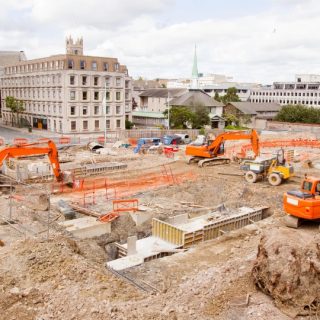The Tourism Industry
The tourism industry is an absolutely vital artery in the economic lifeblood of Scotland, injecting billions of pounds into the nation’s coffers and sustaining hundreds of thousands of jobs across a diverse range of sectors. Beyond the headline figures, tourism acts as a powerful catalyst for regional development, cultural preservation, and the promotion of Scotland’s unique identity on the global stage. Its importance resonates through urban centers and remote rural communities alike, making it an indispensable component of Scotland’s overall prosperity and well-being.
Economically, the tourism sector is a powerhouse. In 2023, the total visitor spend in Scotland reached an impressive £10.8 billion, demonstrating the sheer scale of economic activity generated by both domestic and international visitors. This expenditure flows through various channels, directly benefiting hotels, restaurants, visitor attractions, transport providers, and a myriad of other businesses. Furthermore, the sector is a significant employer. In the same year, tourism supported approximately 245,000 jobs across Scotland, representing a substantial portion of the workforce and highlighting its crucial role in providing livelihoods and economic stability for countless families. This makes the tourism and events industry one of the fastest-growing sectors in the country.
The economic impact of tourism extends far beyond these direct contributions. It acts as a crucial multiplier, stimulating growth in numerous related industries. For instance, the demand from hotels and restaurants supports local food and drink producers, agricultural businesses, and fishing communities. The need for transportation services benefits bus and train operators, taxi services, and car rental companies. The construction and maintenance of tourist infrastructure, such as hotels and attractions, provide opportunities for the building sector. Arts, culture, and heritage sites thrive on visitor numbers, supporting museums, galleries, and historical landmarks. Even retail businesses benefit from tourist spending on souvenirs, local crafts, and everyday goods. This intricate web of interconnected industries underscores the pervasive economic influence of tourism throughout Scotland.

International tourism is a particularly valuable segment, bringing significant foreign currency into the Scottish economy. In 2023, international visitors spent £3.59 billion in Scotland, marking a substantial 41% increase compared to pre-pandemic levels in 2019. These visitors often stay longer and tend to have a higher average spend per trip, making them a crucial driver of economic growth. The appeal of Scotland’s stunning landscapes, rich history, and vibrant culture attracts visitors from all corners of the globe, bolstering the nation’s reputation as a premier tourist destination.
Beyond the purely financial aspects, the tourism industry plays a vital role in regional development. It can be a lifeline for rural and island communities, where other employment opportunities may be limited. Tourism-related businesses, such as small hotels, bed and breakfasts, and local attractions, provide essential income and employment in these areas, helping to sustain local populations and prevent decline. The influx of visitors can also support local services and infrastructure, contributing to the overall quality of life for residents.
Culturally, tourism acts as a powerful force for showcasing and preserving Scotland’s unique heritage and identity. Visitors are drawn to the country’s historic castles, ancient ruins, traditional music, and distinctive Gaelic culture. The tourism industry provides a platform for these cultural assets to be celebrated and shared with a global audience, fostering a sense of national pride and ensuring their continuity for future generations. Moreover, the interaction between locals and visitors can lead to a greater understanding and appreciation of different cultures, fostering a more interconnected and tolerant society.
However, the tourism industry in Scotland is not without its challenges. Seasonality can create peaks and troughs in employment and revenue, and reliance on external factors, such as global economic conditions and travel trends, can make the sector vulnerable. Ensuring sustainable tourism practices is also crucial to minimize environmental impact and respect local communities. This includes managing visitor numbers, promoting responsible behavior, and investing in eco-friendly infrastructure. Addressing labor shortages, particularly in the hospitality sector, is another key challenge that requires strategic solutions to ensure the industry can continue to deliver high-quality experiences.
In conclusion, the tourism industry is of paramount importance to Scotland’s economy. It is a major contributor to GDP, a significant source of employment, and a vital driver of economic activity across numerous sectors. Furthermore, it plays a crucial role in regional development, cultural preservation, and the promotion of Scotland’s unique identity worldwide. While navigating ongoing challenges, the continued growth and sustainable development of the tourism sector are essential for the long-term economic prosperity and cultural vibrancy of Scotland. By strategically supporting and nurturing this vital industry, Scotland can ensure that it remains a world-class destination and reaps the significant economic and social rewards that tourism brings.















